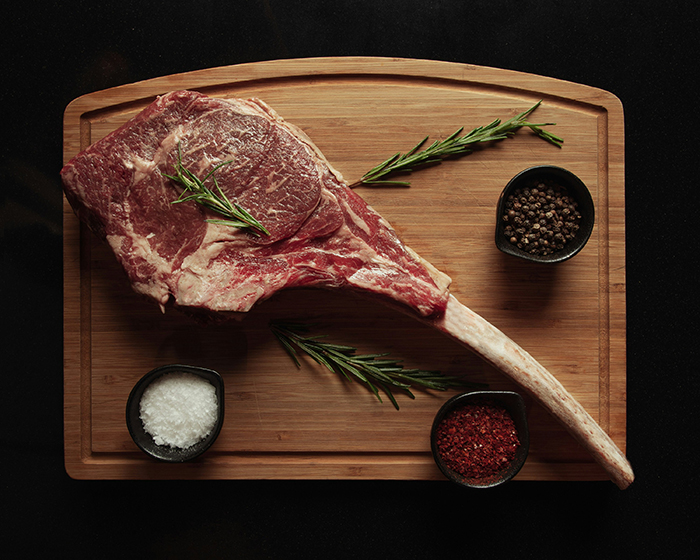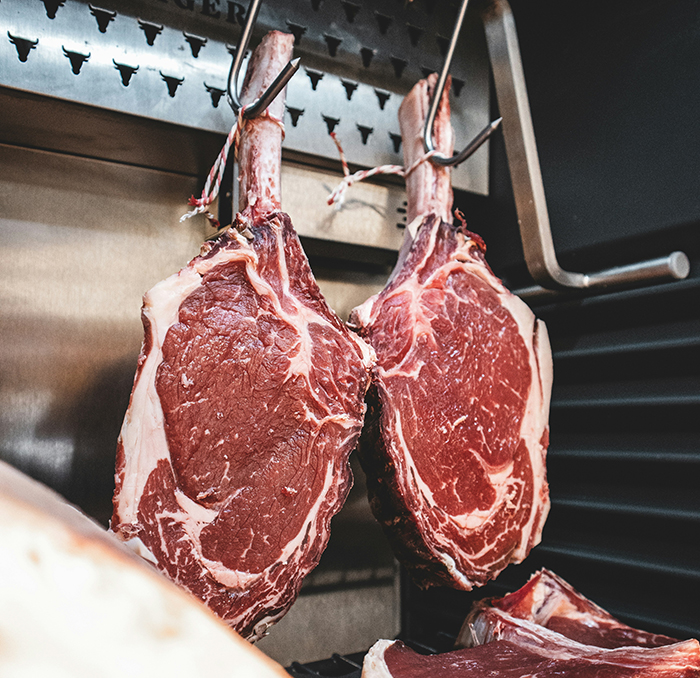30 Dec, 2024
How to Dry Age Meat
How to Dry Age Meat: A Guide for Professional Kitchens
Dry-aged meat is the gold standard for flavor and tenderness, delivering a dining experience that leaves an unforgettable impression. For restaurants aiming to elevate their menus, offering dry-aged steaks or other cuts can set you apart from the competition. The process of dry aging, however, requires precision, time, and the right equipment. In this guide, we’ll explore how to dry age meat properly and highlight the benefits of using a dedicated dry aging cabinet.
What Is Dry Aging?
Dry aging is a controlled process that enhances the flavor and texture of meat by allowing natural enzymes to break down muscle tissue over time. During this process, moisture evaporates from the meat, concentrating its flavor. The result is a tender, richly flavored cut that commands premium pricing on any menu.
The Importance of Controlled Conditions
Dry aging requires precise control over temperature, humidity, and airflow to ensure safety and optimal results. Here’s a breakdown of the ideal conditions:
- Temperature: Between 34°F and 38°F (1°C to 3°C) to prevent spoilage while allowing enzymatic activity.
- Humidity: 75% to 85% to reduce excessive moisture loss while preventing bacterial growth.
- Airflow: Proper circulation to maintain consistent conditions and prevent mold growth.
Without these controls, the dry aging process can result in spoilage or uneven aging, which is why professional-grade dry aging cabinets are essential.
What Flavors Does Dry Aging Add to Meat?
One of the most remarkable aspects of dry aging is the depth of flavor it imparts to meat. As the enzymes break down muscle tissue, the beef develops a rich, nutty, and buttery profile with a slight tang. The extended aging process also enhances umami, resulting in a savory and concentrated taste that’s highly sought after by food enthusiasts. These unique flavors can elevate your dishes to new heights and justify premium pricing on your menu.
Dry Aging vs. Curing: What’s the Difference?
While both dry aging and curing are methods of preserving and enhancing meat, they are distinct processes:
- Dry Aging: This process focuses on improving the tenderness and flavor of fresh cuts of meat through enzymatic activity and controlled moisture loss. It is typically used for large cuts of beef, such as ribeye or strip loin, and requires precise control of temperature, humidity, and airflow.
- Curing: Curing involves adding salt, nitrates, or other curing agents to meat to preserve it and develop unique flavors. This method is commonly used for products like bacon, prosciutto, and salami. Unlike dry aging, curing often requires specific recipes and techniques to achieve the desired taste and texture.
Understanding these differences can help you choose the right process for your menu offerings and customer preferences.
How to Dry Age Meat
1. Select the Right Cut: Opt for large, bone-in cuts like ribeye, strip loin, or whole tenderloin. These cuts have sufficient fat and size to withstand moisture loss during aging.
2. Prepare the Meat: Trim excess fat and silver skin, but leave a protective layer of fat intact. This layer will be removed after aging.
3. Place in the Dry Aging Cabinet: Use a professional dry aging cabinet to ensure consistent conditions. Avoid crowding the cabinet to maintain adequate airflow.
4. Monitor Progress: Regularly check the meat for color and aroma. A deep, rich, red-brown color and a nutty aroma are signs of successful aging.
5. Timing: Aging periods typically range from 14 to 45 days. Shorter aging periods enhance tenderness, while longer periods concentrate flavor.
6. Trim and Serve: After aging, trim away the outer crust to reveal the perfectly aged meat beneath. Cut into portions and prepare to your desired recipe.
Why Invest in a Dry Aging Cabinet?
Dry aging cabinets are a game-changer for restaurants and butcher shops. Here’s why:
- Precision: Built-in controls for temperature, humidity, and airflow take the guesswork out of dry aging.
- Safety: Cabinets are designed to minimize the risk of contamination or spoilage.
- Efficiency: Compact designs allow for dry aging in any commercial kitchen space.
- Consistency: Every batch of meat is aged under optimal conditions, ensuring reliable quality.
Highlighted Dry Aging Cabinets
Check out the following popular dry aging cabinets to help you achieve the perfect results:
Compact and Versatile
Omcan 45143 Dry Aging and Curing Cabinet: This cabinet is a versatile solution for both dry aging and curing. It features precise controls for temperature and humidity, ensuring optimal conditions for a variety of meats. Its compact design makes it an excellent choice for commercial kitchens with limited space.
Show Them off with 4-Glass View
Stagionello MM-IT-900-SS-AV Dry Aging Cabinet: Designed with a stunning 4-glass view, this cabinet allows you to showcase your dry aging process to customers while maintaining perfect conditions. With advanced controls and a sleek stainless-steel finish, it’s as functional as it is visually impressive.
Showcase Dry-Aged Meat on Your Menu
Promoting dry-aged dishes can significantly boost your restaurant’s appeal. Highlight these menu items with descriptions that emphasize the deep, complex flavors developed through the dry aging process. Offer premium pricing for these dishes, as diners are often willing to pay more for a superior, unique culinary experience.
Discover the Perfect Dry Aging Solution
At Vortex Restaurant Equipment, we offer a range of commercial-grade dry aging cabinets designed for professional kitchens. With advanced features to maintain ideal conditions, our cabinets make it easy to produce consistently excellent dry-aged meat.
Explore our dry aging cabinet collection today and see more about how they can boost your menu!


